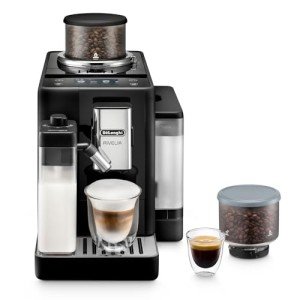Bean to Cup Espresso Machines: The Complete Guide
In the world of coffee fans, the bean to cup espresso machine represents the pinnacle of a quality developing experience. It combines the freshest coffee beans with advanced developing innovation, allowing users to create café-quality espresso and coffee beverages from the comfort of their own cooking areas. This post explores the features, benefits, and shortcomings of bean to cup espresso machines, in addition to a choice of popular designs offered in the market.
What is a Bean to Cup Espresso Machine?
A bean to cup espresso machine is an automatic coffee maker that integrates the mill, brewing unit, and coffee shipment system into one system. Unlike conventional espresso machines that need separate grinding equipment and might require manual brewing strategies, bean to cup machines grind, brew, and give coffee in mere moments, making them easy to use and hassle-free.
Key Features of Bean to Cup Espresso Machines
Here are essential functions that consumers should think about when looking for the perfect bean to cup espresso machine:
- Built-in Grinder: Freshly ground coffee is crucial for a terrific cup. Bean To Cup Coffee Machines For Home to cup machines include an incorporated mill that permits users to select grind size and dosage.
- Adjustable Brewing Options: Quality machines provide customizable settings for developing temperature level, coffee strength, and milk frothing abilities, accommodating varied tastes.
- User-Friendly Controls: Many machines include user-friendly touch screens or LCD display screens for easy navigation between developing choices.
- Automatic Milk Frothing: For those who delight in coffees or lattes, some machines consist of automatic frothers, enabling creamy and steamed milk at the touch of a button.
- Easy Cleaning and Maintenance: Cleaning mechanisms, such as removable brewing units and automatic cleaning cycles, are vital for keeping machine health.
Advantages of Bean to Cup Espresso Machines
- Freshness: Since the machines grind coffee beans on demand, customers get the best coffee possible.
- Convenience: With a bean to cup machine, developing coffee becomes an effortless procedure, needing bit more than journalism of a button.
- Adaptability: Many models offer a variety of brewing alternatives, from espresso to coffees, making them versatile for each coffee choice.
- Space-Saving Design: By integrating multiple functionalities into a compact design, bean to cup machines conserve counter space.
- Consistency: Automated procedures decrease human error, ensuring that every cup of coffee is consistently high quality.
Downsides of Bean to Cup Espresso Machines
Regardless of their numerous benefits, bean to cup espresso machines do have some disadvantages:
- Cost: High-quality machines can be expensive, providing a barrier for numerous potential purchasers.
- Size: Some models can be large, needing adequate counter space.
- Upkeep and Repairs: While numerous machines have self-cleaning functions, maintaining them and fixing issues can be complicated and costly.
- Minimal Customization: Compared to conventional espresso machines, users may find less control over specific elements of the developing process.
Popular Bean to Cup Espresso Machines
Here is a selection of popular bean to cup espresso machines currently offered in the market:
| Brand & & Model | Mill Type | Milk Frother | Price Range * | User Rating |
|---|---|---|---|---|
| De'Longhi Dinamica | Burr | Manual | ₤ 1,200 - ₤ 1,500 | 4.5/ 5 |
| Jura E8 | Cone-shaped | Automatic | ₤ 2,200 - ₤ 2,600 | 4.7/ 5 |
| Saeco PicoBaristo | Ceramic | Automatic | ₤ 1,000 - ₤ 1,300 | 4.6/ 5 |
| Breville Oracle Touch | Double Boiler | Automatic | ₤ 2,000 - ₤ 2,400 | 4.8/ 5 |
| Philips 3200 Series | Ceramic | Handbook | ₤ 800 - ₤ 1,000 | 4.4/ 5 |
* Prices are approximate and differ by seller.
Picking the Right Bean to Cup Espresso Machine
When selecting the ideal bean to cup espresso machine, consumers ought to consider a number of aspects:
- Budget: Determine how much you're willing to buy a machine; this will help limit your alternatives.
- Space: Measure your counter space to make sure the selected design accommodates your kitchen area layout.
- Preferred Beverage Type: If you favor milk-based drinks, look for models with automatic milk frothers.
- Maintenance Preferences: Decide just how much time you're willing to dedicate to cleansing and maintenance.
Regularly Asked Questions (FAQs)
Q1: Do I need any special coffee beans for a bean to cup espresso machine?
A1: While you can utilize any whole coffee beans, medium to dark roast beans typically work best for espresso. Freshness matters, so select recently roasted beans for ideal flavor.
Q2: Are bean to cup espresso machines simple to clean up?
A2: Many models feature detachable elements and self-cleaning functions. However, routine upkeep, including descaling, is required to keep the machine in leading shape.
Q3: Can I make other coffee drinks besides espresso with a bean to cup machine?
A3: Yes, the majority of bean to cup machines can brew different coffee drinks, consisting of lattes, coffees, and coffee shop au lait, thanks to their built-in developing and frothing capabilities.
Q4: How long do bean to cup machines usually last?
A4: With appropriate maintenance, quality bean to cup machines can last between 5 to 10 years, depending on usage and care.
Bean to cup espresso machines provide an excellent option for coffee fans looking for quality, benefit, and flexibility in their developing process. While the initial investment may be substantial, the capability to delight in newly ground and brewed coffee in your home often exceeds the expenses. Whether you're an espresso enthusiast or simply starting your coffee journey, purchasing a bean to cup espresso machine can significantly enhance your at-home coffee experience.

